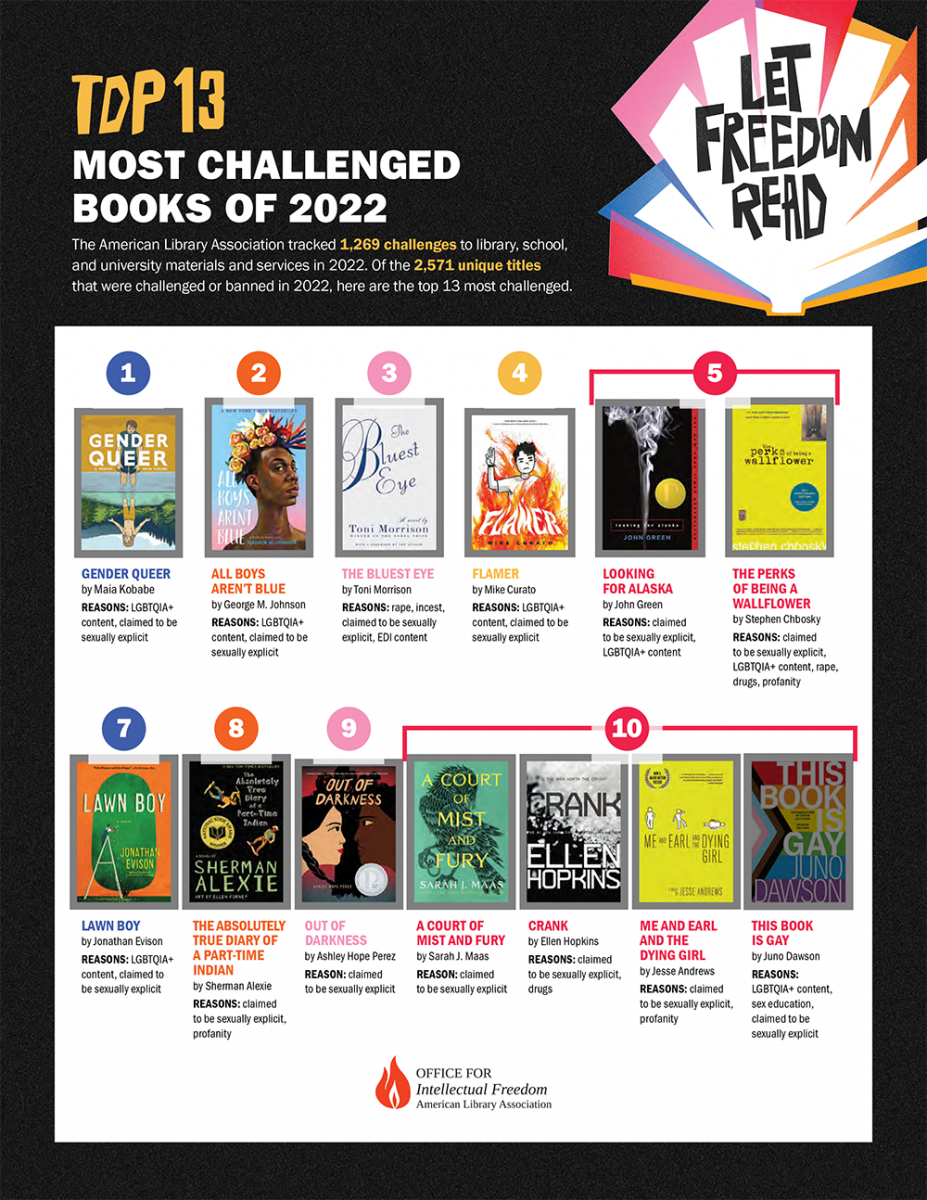

According to the American Library Association (ALA), a challenge is an attempt to remove or restrict materials, based upon the objections of a person or group. A banning is the removal of those materials. Challenges do not simply involve a person expressing a point of view; rather, they are an attempt to remove material from the curriculum or library, thereby restricting the access of others. As such, they are a threat to freedom of speech and choice.
The ALA promotes the freedom to choose or the freedom to express one's opinions, even if that opinion might be considered unorthodox or unpopular, and stresses the importance of ensuring the availability of those viewpoints to all who wish to read them.
As of July 2022, book banning in the U.S. hit its highest level in 40 years. Books about race, gender, diversity, and inclusion are being targeted and removed from schools and libraries in every state.





